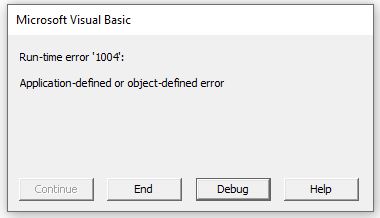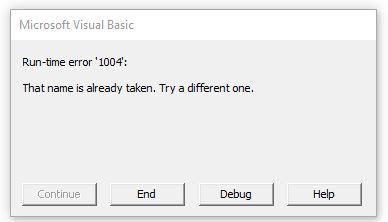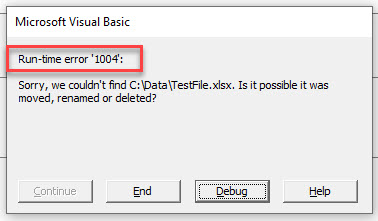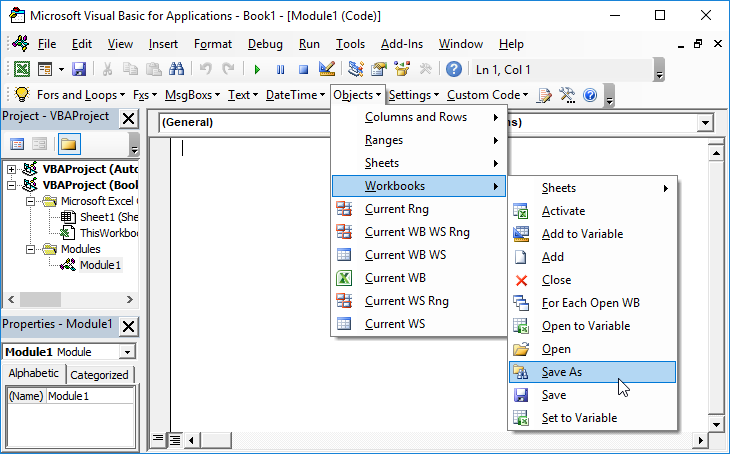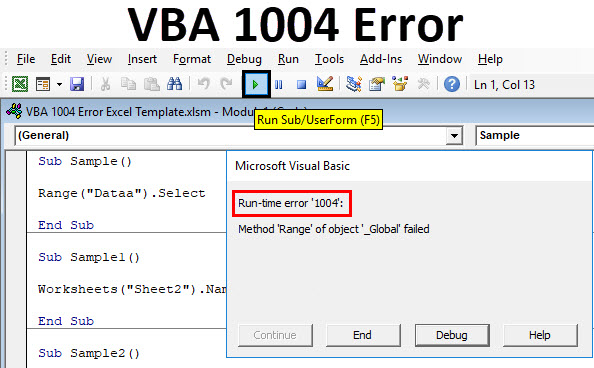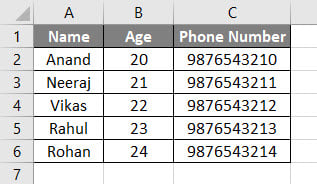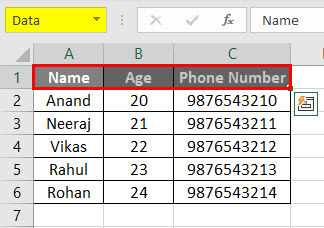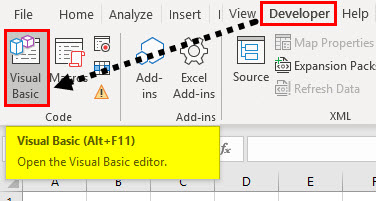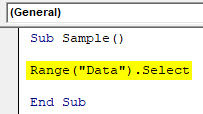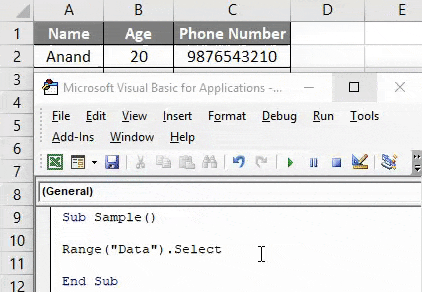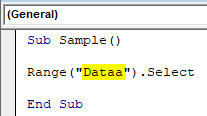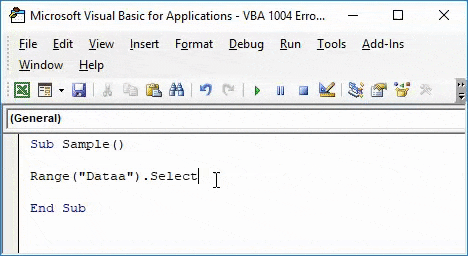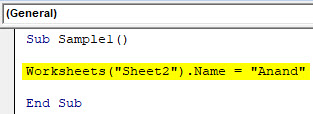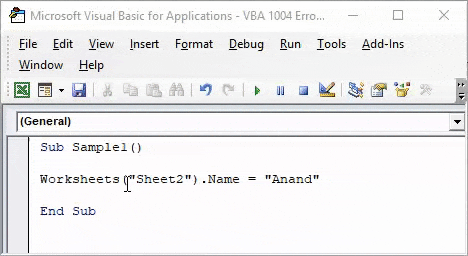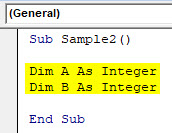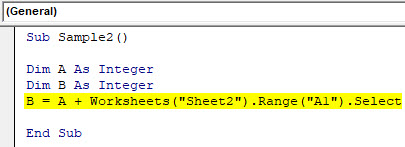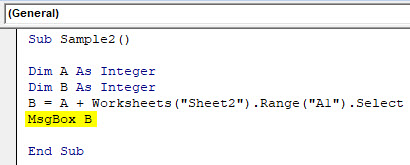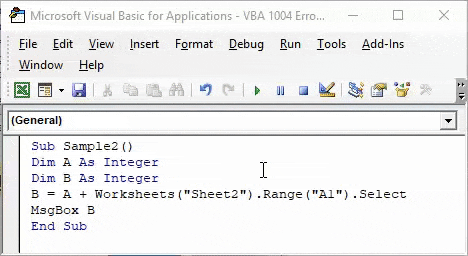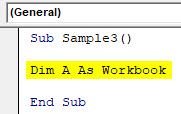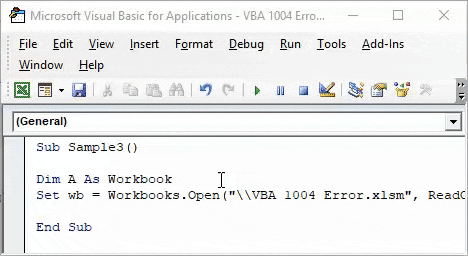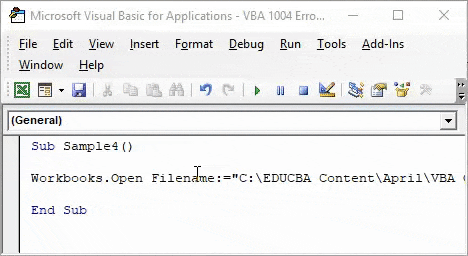I try to open a workbook in a folder which a user decide by entering Dateconso. Open the workbook copy/paste in another workbook.
The problem is that the code breaks at opening the file.
Execution error 1004:’11400. 16.01.xlsm’ not found.
Here the thing the name of the workbook is 11400.16.01.xlsm without any space between 11400. and 16 (which is Dateconso).
I understand that it cannot open this workbook because it doesn’t exist…but this is not the workbook I want to open !!!
Sub consolidation()
'
' Macro
' Déclaration des variables
Dim wb As Workbook
Dim myPath As String
Dim myFile As String
Dim Dateconso As String
'Optimisation de la Macro Speed
Application.ScreenUpdating = True
Application.EnableEvents = True
'Sélection de la date
Dateconso = InputBox("Quelle date souhaitez-vous consolider?","Question")
If Dateconso = "" Then Exit Sub 'Si rien exit le programme
'Trouve les fichiers qui on la date associée
myFile = Dir("Z:7. PersonnelFlorianProjet_BDCTest*.xlsm")
While myFile <> ""
If InStr(myFile, Dateconso) > 0 Then 'si tu trouve la date recherchée, alors ouvre le fichier puis copie toute puis colle
Set wb = Workbooks.Open(Filename:=myFile)
wb.Worksheets(1).Range("A1").Select
Range(Selection, Selection.End(xlToRight)).Select
Range(Selection, Selection.End(xlDown)).Select
Selection.Copy
Workbooks("Consolidation.xlsm").Worksheets(2).Activate
ActiveSheet.Paste
wb.Close
Else: MsgBox "Fichiers introuvables, vérifiez le format de date entré" 'Si il ne trouve rien, préviens l'utilisateur
Exit Sub
End If
myFile = Dir()
Wend
End Sub
asked Jan 22, 2016 at 18:28
5
This actually has nothing to do with the way that VBA is misreading the filename. In fact, the repair (e.g. extra space character) is necessary in a filenname containing periods for some reason. Leave the filename alone.
The problem is that you are not supplying the path along with the filename. The Dir function only returns the filename, not the full path. You need to add the path back in before using it.
Dim fp As String, fn As String
fp = "Z:7. PersonnelFlorianProjet_BDCTest"
fn = Dir(fp & "*.xlsm")
While fn <> ""
If InStr(fn, Dateconso) > 0 Then 'si tu trouve la date recherchée, alors ouvre le fichier puis copie toute puis colle
Set wb = Workbooks.Open(Filename:=fp & fn)
'do stuff
wb.Close
Else: MsgBox "Fichiers introuvables, vérifiez le format de date entré" 'Si il ne trouve rien, préviens l'utilisateur
Exit Sub
End If
fn = Dir()
Wend
answered Jan 22, 2016 at 19:05
4
OK, so far I’ve uninstalled & re installed Office-2010 3 to 4 times, done hours of research for 3 days with no success. I started getting this error either from Vbscript or Excel VBA, performing the same command that has worked for months. I am not sure what I may have changed, I don’t recall changing anything that could cause it but I nailed it down to the ReadOnly:=True parameter. I think something may be wrong with the registry… but re-installing should fix it right? It didn’t…
Anyways, very simple command that I recorded on Excel 2010. This command WORKS FINE and the file opens:
Sub Macro1()
Workbooks.Open Filename:="C:tempfile_9928_131101.xlsx"
End Sub
But when I add the ReadOnly:=True parameter, it does NOT WORK:
Sub Macro1()
Workbooks.Open Filename:="C:tempfile_9928_131101.xlsx", ReadOnly:=True
End Sub
This is the returned error Run-time error ‘1004’ Method ‘Open’ of object ‘Workbooks’ failed:
When I click Debug, the error is at the only line of code.
- Remove From My Forums
-
Question
-
I have a Excel(2010) workbook with three worksheets of data. I have VBA code to save one of the worksheets to a .CSV file at the root of the hard drive. Use case: click button to run macro:
1 — Prompts to save the worksheet.
2 — Displays the worksheet to be saved.
3 — Then popup error message: Run time error «1004» Cannot Access Read Only Document.
4 — program hangs with a copy of the worksheet that is to be saved. It hangs on the ActiveWorkbook.SavesAs line.
I was able to force a debug and locate the line that is hanging:
Response = MsgBox(Msg, Style, title, Help, Ctxt)
If Response = vbYes Then
Application.DisplayAlerts = False
Worksheets(«Teams»).Copy
ActiveWorkbook.SaveAs Filename:=»C:Team_Stats_» & Format(Now(), «YYYYMMDDhhmmss») & «.csv», FileFormat:=xlCSV, CreateBackup:=False
ActiveWorkbook.Close
Application.DisplayAlerts = True
Else
Exit Sub
End If
Answers
-
-
Marked as answer by
Tuesday, March 12, 2013 1:12 AM
-
Marked as answer by
Return to VBA Code Examples
In this Article
- VBA Error 1004 – Object does not exist
- VBA Error 1004 – Name Already Taken
- VBA Error 1004 – Incorrectly Referencing an Object
- VBA Error 1004 – Object Not Found
This tutorial will explain the VBA Error 1004- Application-Defined or Object-Defined Error.
VBA run-time error 1004 is known as an Application-Defined or Object-Defined error which occurs while the code is running. Making coding errors (See our Error Handling Guide) is an unavoidable aspect learning VBA but knowing why an error occurs helps you to avoid making errors in future coding.
VBA Error 1004 – Object does not exist
If we are referring to an object in our code such as a Range Name that has not been defined, then this error can occur as the VBA code will be unable to find the name.
Sub CopyRange()
Dim CopyFrom As Range
Dim CopyTo As Range
Set CopyFrom = Sheets(1).Range("CopyFrom")
Set CopyTo = Sheets(1).Range("CopyTo")
CopyFrom.Copy
CopyTo.PasteSpecial xlPasteValues
End SubThe example above will copy the values from the named range “CopyFrom” to the named range “CopyTo” – on condition of course that these are existing named ranges! If they do not exist, then the Error 1004 will display.
The simplest way to avoid this error in the example above is to create the range names in the Excel workbook, or refer to the range in the traditional row and column format eg: Range(“A1:A10”).
VBA Error 1004 – Name Already Taken
The error can also occur if you are trying to rename an object to an object that already exists – for example if we are trying to rename Sheet1 but the name you are giving the sheet is already the name of another sheet.
Sub NameWorksheet()
ActiveSheet.Name = "Sheet2"
End SubIf we already have a Sheet2, then the error will occur.
VBA Error 1004 – Incorrectly Referencing an Object
The error can also occur when you have incorrectly referenced an object in your code. For example:
Sub CopyRange()
Dim CopyFrom As Range
Dim CopyTo As Range
Set CopyFrom = Range("A1:A10")
Set CopyTo = Range("C1:C10")
Range(CopyFrom).Copy
Range(CopyTo).PasteSpecial xlPasteValues
End SubThis will once again give us the Error 10004
Correct the code, and the error will no longer be shown.
Sub CopyRange()
Dim CopyFrom As Range
Dim CopyTo As Range
Set CopyFrom = Range("A1:A10")
Set CopyTo = Range("C1:C10")
CopyFrom.Copy
CopyTo.PasteSpecial xlPasteValues
End SubVBA Error 1004 – Object Not Found
This error can also occur when we are trying to open a workbook and the workbook is not found – the workbook in this instance being the object that is not found.
Sub OpenFile()
Dim wb As Workbook
Set wb = Workbooks.Open("C:DataTestFile.xlsx")
End SubAlthough the message will be different in the error box, the error is still 1004.
VBA Coding Made Easy
Stop searching for VBA code online. Learn more about AutoMacro — A VBA Code Builder that allows beginners to code procedures from scratch with minimal coding knowledge and with many time-saving features for all users!
Learn More!
Excel VBA Error 1004
VBA 1004 Error is an error we encounter while we execute a code in VBA it is also known as VBA Runtime error. While we work in VBA or in any other programming language or even in our daily work we encounter different kinds of errors. Sometimes even we miss a single character in the code which causes the whole code not to work or maybe the entire code is wrong.
Errors are definitely a part of the code we write. It may be unintentional but they exist. No matter how pro we are in coding, runtime error can occur anywhere. As explained above VBA 1004 Error is an error which occurs during the runtime of the code in excel. It is also called an application defined or object defined error.
There are different types of reasons we get VBA Runtime Error 1004 in excel, let us learn a few of them.
- VBA Runtime Error 1004: Method ‘Range’ of object ‘_ Global’ failed:
This error occurs when the range value we refer to VBA is incorrect. It is also called as Method “Range” of object’ _ Global’ failed.
- VBA Run Time Error 1004: That Name is already taken. Try a different One:
We give the same name to a worksheet which is already taken by another worksheet.
- VBA Runtime Error 1004: Unable to get the select property of Range class:
This is an error when we select a range in another worksheet without activating the worksheet we are referring to.
- VBA Runtime Error 1004: Method ‘Open’ of object ‘Workbooks’ failed:
This error occurs when we try to open a workbook which is already open or the file is used by another program already.
- VBA Runtime Error 1004: Sorry We Couldn’t Find:
We get this error when we try to open a worksheet which doesn’t exist.
As we have learned there can be various reasons we get a runtime error. Runtime error can occur at any line of code. We need to learn how to learn to handle these errors and it is called VBA Error Handling.
Example of VBA Runtime Error 1004 in Excel
Now as I have described different types of error which can occur during runtime of any VBA code now let us learn them how they appear with examples.
You can download this VBA 1004 Error Excel Template here – VBA 1004 Error Excel Template
VBA Runtime Error 1004 – Example #1
As explained about this error, this error occurs when we refer to an incorrect named range value in VBA. This can happen if we make a spelling mistake of the named range of to refer a range that doesn’t even exist. To demonstrate this let us make a named range first. I have the following data here.
- Let us name this table header as DATA.
- Go to the Developer tab click on Visual Basic to Open VB Editor.
- Declare the sub-function to start writing the code.
Code:
Sub Sample() End Sub
- Call the header we named by the following code written below.
Code:
Sub Sample() Range("Data").Select End Sub
- When we run the code we can see in the excel that it has been selected as we have called the header correctly.
- Now we misspell the spelling for the header name.
Code:
Sub Sample() Range("Dataa").Select End Sub
- Run the code again to see the result.
We get excel VBA Runtime Error 1004 because we have misspelled the range name.
VBA Runtime Error 1004 – Example #2
We get this error when we try to rename a worksheet with a name which is already taken. For example, I have renamed sheet 1 as “Anand” and I will try to rename sheet 2 as same then see the result.
- Go to the Developer tab click on Visual Basic to Open VB Editor.
- Declare a sub-function to start writing the code.
Code:
Sub Sample1() End Sub
- Try to rename sheet 2 as Anand by the following code below,
Code:
Sub Sample1() Worksheets("Sheet2").Name = "Anand" End Sub
- Run the above code and see the result.
When I try to rename a sheet with the name which is already taken I get an Error.
VBA Runtime Error 1004 – Example #3
I will try to add the value from sheet 2 to a variable in sheet 3. But I will not activate the sheet 2 and see what happens.
- Go to the Developer tab click on Visual Basic to Open VB Editor.
- Declare a sub-function to start writing the code.
Code:
Sub Sample2() End Sub
- Declare two variables A and B as an integer.
Code:
Sub Sample2() Dim A As Integer Dim B As Integer End Sub
- In Variable B store the value of A in addition to cell A1 of sheet 2.
Code:
Sub Sample2() Dim A As Integer Dim B As Integer B = A + Worksheets("Sheet2").Range("A1").Select End Sub
- Let us suppose the code works and use msgbox function to display the value of B.
Code:
Sub Sample2() Dim A As Integer Dim B As Integer B = A + Worksheets("Sheet2").Range("A1").Select MsgBox B End Sub
- Run the code to see the result obtained.
We get this Error because we have not activated sheet 2 but we are trying to use a value of sheet 2.
VBA Runtime Error 1004 – Example #4
We encounter this runtime error when we have already the same name of workbook open but we try to open it again.
For this example, I have already renamed my workbook as VBA 1004 Error.xlsm and I will try to open it again which is already open and see if I get VBA 1004 Error.
- Go to the Developer tab click on Visual Basic to Open VB Editor.
- Declare a sub-function to start writing the code.
Code:
Sub Sample3() End Sub
- Declare a variable as the workbook.
Code:
Sub Sample3() Dim A As Workbook End Sub
Try to open the workbook we have currently already open with the following code.
Code:
Sub Sample3() Dim A As Workbook Set wb = Workbooks.Open("\VBA 1004 Error.xlsm", ReadOnly:=True, CorruptLoad:=xlExtractData) End Sub
Run the above code to see the result.
We get this error because we have already opened the same workbook already.
VBA Runtime Error 1004 – Example #5
We get this error when we try to open a workbook which doesn’t exist. This is somewhat similar to the above error we get as VBA cannot find the workbook.
- Go to the Developer tab click on Visual Basic to Open VB Editor.
- Declare a sub-function to start writing the code.
Code:
Sub Sample4() End Sub
- Try Open any workbook with the following code,
Code:
Sub Sample4() Workbooks.Open Filename:="C:EDUCBA ContentAprilVBA OR Function.xlsm" End Sub
- I have already deleted the sheet from the location.
- Run the code to see the result.
As the sheet doesn’t exist at the given location we get this error.
Things to Remember
- Always check for spelling mistakes.
- Do not rename multiple worksheets with the same name.
- Before calling any other reference to be sure to activate the respective worksheet.
- Before trying to open any other worksheet ensure the path provided is correct.
Recommended Articles
This has been a guide to VBA 1004 Error. Here we discussed Excel VBA Runtime Error 1004 along with practical examples and downloadable excel template. You can also go through our other suggested articles –
- VBA LBound
- VBA While Loop
- VBA IsError
- VBA CLng

